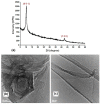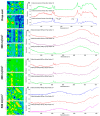Silver/Graphene Oxide Nanostructured Coatings for Modulating the Microbial Susceptibility of Fixation Devices Used in Knee Surgery
- PMID: 38203420
- PMCID: PMC10779033
- DOI: 10.3390/ijms25010246
Silver/Graphene Oxide Nanostructured Coatings for Modulating the Microbial Susceptibility of Fixation Devices Used in Knee Surgery
Abstract
Exploring silver-based and carbon-based nanomaterials' excellent intrinsic antipathogenic effects represents an attractive alternative for fabricating anti-infective formulations. Using chemical synthesis protocols, stearate-conjugated silver (Ag@C18) nanoparticles and graphene oxide nanosheets (nGOs) were herein obtained and investigated in terms of composition and microstructure. Scanning electron microscopy (SEM) and transmission electron microscopy (TEM) characterizations revealed the formation of nanomaterials with desirable physical properties, while X-ray diffraction (XRD) analyses confirmed the high purity of synthesized nanomaterials. Further, laser-processed Ag@C18-nGO coatings were developed, optimized, and evaluated in terms of biological and microbiological outcomes. The highly biocompatible Ag@C18-nGO nanostructured coatings proved suitable candidates for the local modulation of biofilm-associated periprosthetic infections.
Keywords: MAPLE coatings; biocompatible and antimicrobial surfaces; graphene oxide nanosheets; silver nanoparticles.
Conflict of interest statement
The authors declare no conflict of interest.
Figures









Similar articles
-
Nanostructured Coatings Based on Graphene Oxide for the Management of Periprosthetic Infections.Int J Mol Sci. 2024 Feb 17;25(4):2389. doi: 10.3390/ijms25042389. Int J Mol Sci. 2024. PMID: 38397066 Free PMC article.
-
Multifunctional oil-produced reduced graphene oxide - Silver oxide composites with photocatalytic, antioxidant, and antibacterial activities.J Colloid Interface Sci. 2022 Feb 15;608(Pt 1):294-305. doi: 10.1016/j.jcis.2021.08.048. Epub 2021 Aug 12. J Colloid Interface Sci. 2022. PMID: 34626976
-
Anti-adhesion and antibacterial activity of silver nanoparticles supported on graphene oxide sheets.Colloids Surf B Biointerfaces. 2014 Jan 1;113:115-24. doi: 10.1016/j.colsurfb.2013.08.006. Epub 2013 Aug 29. Colloids Surf B Biointerfaces. 2014. PMID: 24060936
-
Graphene materials: Armor against nosocomial infections and biofilm formation - A review.Environ Res. 2022 Nov;214(Pt 2):113867. doi: 10.1016/j.envres.2022.113867. Epub 2022 Jul 14. Environ Res. 2022. PMID: 35843279 Review.
-
Antibiofouling Activity of Graphene Materials and Graphene-Based Antimicrobial Coatings.Microorganisms. 2021 Aug 30;9(9):1839. doi: 10.3390/microorganisms9091839. Microorganisms. 2021. PMID: 34576733 Free PMC article. Review.
Cited by
-
Antibacterial Properties of PMMA/ZnO(NanoAg) Coatings for Dental Implant Abutments.Materials (Basel). 2025 Jan 15;18(2):382. doi: 10.3390/ma18020382. Materials (Basel). 2025. PMID: 39859853 Free PMC article.
-
Metallic nanoparticles: a promising novel therapeutic tool against antimicrobial resistance and spread of superbugs.Biometals. 2025 Feb;38(1):55-88. doi: 10.1007/s10534-024-00647-5. Epub 2024 Oct 24. Biometals. 2025. PMID: 39446237 Review.
References
-
- Irarrázaval S., Yaseen Z., Guenther D., Fu F.H. Clinical Management of Ligament Injuries of the Knee and Postoperative Rehabilitation. Regen. Strateg. Treat. Knee Jt. Disabil. 2017;21:323–348.
-
- Abulhasan J.F., Grey M.J. Anatomy and Physiology of Knee Stability. J. Funct. Morphol. Kinesiol. 2017;2:34. doi: 10.3390/jfmk2040034. - DOI
MeSH terms
Substances
LinkOut - more resources
Full Text Sources

